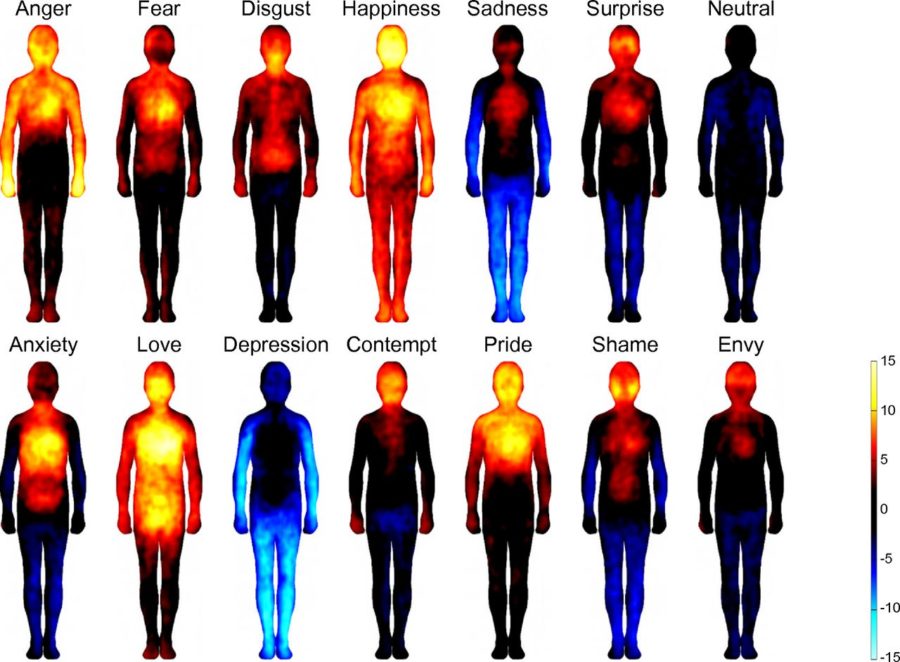Since we started breaking the myth that “being a professional means avoiding emotions”, we have realized the importance of one key soft skill: emotional awareness. This is still a field being explored, especially in professional contexts where the line between personal and relational could be a difficult one to thread — and might be better discussed with a therapist.
There are however two interesting concepts that can be useful in our personal journey to improve our emotional awareness, both are about the relationship between emotions and body.
Emotions and our face
We can elicit emotions just with the corresponding facial expression. This might sound far fetched, but it’s something that we have known at least since 1990 thanks to the studies of P. Ekman and others, and has been further confirmed in the following years.
The importance of this study can’t be overstated: it shows a direct, bidirectional connection between muscles and brain, body and emotions. It’s not just the emotion action on the body, but the body itself is creating a reinforcing mechanism with existing emotions.
Can this knowledge be used in the day to day? Yes, even if we need to recognize that the effect is weak — like a gentle nudge not a strong push. As such, while we can’t just change our expression to get out of anger or sadness, recognizing the expression can be one element that helps us in dealing with it.
Emotions and our body
It’s also not just about our face. Recent studies have confirmed that emotions are located within the body.
Emotional feelings are associated with discrete, yet partially overlapping maps of bodily sensations, which could be at the core of the emotional experience. These results thus support models assuming that somatosensation and embodiment play critical roles in emotional processing.
L. Nummenmaa, E. Glerean, R. Hari, J. K. Hietanen (2014)
Bodily maps of emotions
This study from 2014 tried to create a map of emotions, associating a set of 13 emotions (plus a neutral state) to specific body areas.

This is interesting on its own, but it can also be useful for our awareness if we reverse the findings: what body parts are associated with specific emotions?
I categorized the main areas, trying to simplify a bit the results. The simplification process here isn’t meant to be an accurate representation of the results of the study, but they are a way to help us work on the recognition of our own emotions.
| Head | Chest | Tummy | Arms | Hands | Legs | Pelvis | |
| Anger | ++ | ++ | + | ++ | |||
| Fear | + | ++ | + | ||||
| Disgust | ++ | + | ++ | ||||
| Happiness | ++ | ++ | + | + | + | + | |
| Sadness | + | + | – | ||||
| Surprise | + | + | |||||
| Anxiety | ++ | + | – | ||||
| Love | ++ | ++ | + | + | + | + | |
| Depression | – | – – | – | – – | |||
| Contempt | + | – | |||||
| Pride | ++ | ++ | |||||
| Shame | ++ | – | – | ||||
| Envy | + |
As we notice from the table, almost every single emotion has an effect on the face, which while it makes for a not very reliable way to discern them, yet also confirms how important our facial expression is in our emotional response.
We can thus use this information to become more aware of our emotions. We can start being more mindful about what’s happening in these parts of our body, if they are “warmer” or “colder”, and then consider what’s the emotion that we’re feeling in the moment:
- Legs
- Arms
- Tummy
- Chest
- Hands
I’ve also picked these words so they form an easy to remember acronym: “latch”. So we can latch better to our emotions.
With this, we can start feeling our body first. Hands warmer and antsy? Check then chest and head… it might be anger, we can check for that. Chest pressure, and almost nothing elsewhere except some leg weakness? Might be anxiety, we can check for that.
Note that’s not much about getting it right, as we can see from the research the correlation is quite nuanced and this is a simplification. Different individual also respond differently. The important part is turning the attention to the body first, then thinking about the related emotion.
Recognizing our own emotions can be difficult looking from the inside of our mind. That’s why these kinds of research are useful: they provide an external indicator we can practice paying attention to in order to become more self-aware. This kind of emotional awareness is the first step in becoming a better person. And a better professional.
Further readings
- L. Nummenmaa, E. Glerean, R. Hari, J. K. Hietanen (2014) Bodily maps of emotions.
- L. Nummenmaa, R. Hari, J. K. Hietanen, E. Glerean (2018) Maps of subjective feelings.
- R. W. Levenson P. Ekman, W. V. Friesen (1990) Voluntary Facial Action Generates Emotion-Specific Autonomic Nervous System Activity.
- Wikipedia, Facial Feedback Hypothesis.